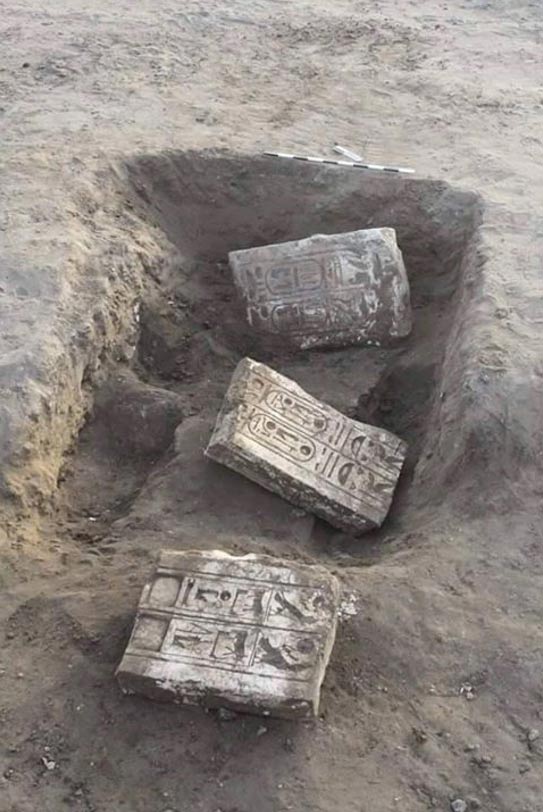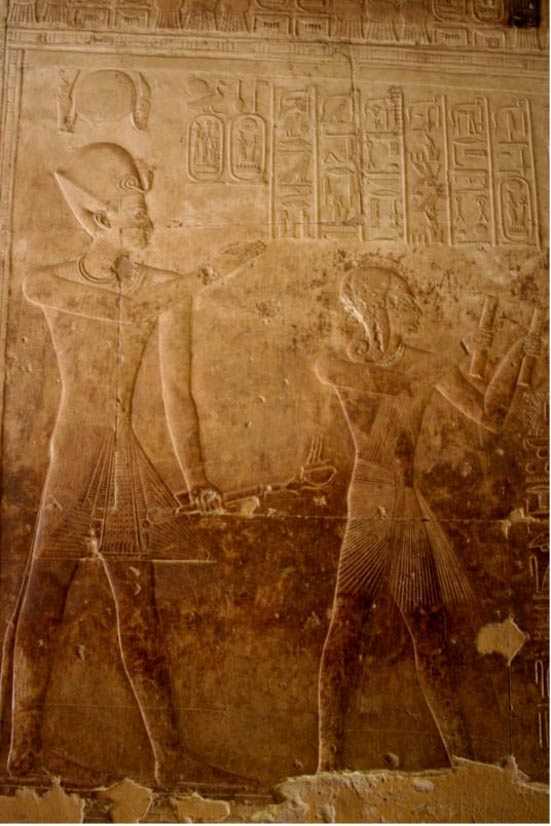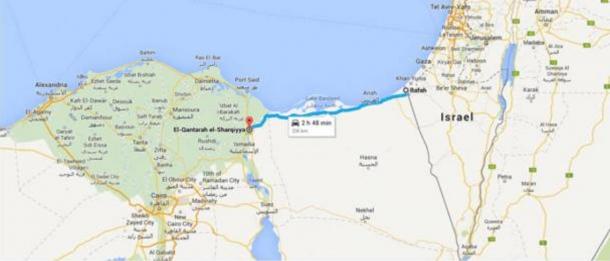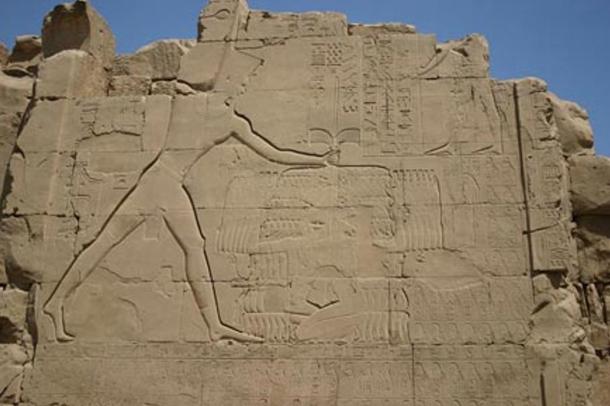- 314
5 MAY, 2015 - 14:08 LIZLEAFLOOR
Archaeological dig at ancient fortress site in Egypt reveals massive gate and graves of fallen warriors
Remnants of an ancient Egyptian army camp and mass graves containing fallen warriors have been found buried in the desert ruins site of Tjaru by a team of archaeologists.
The impressive size of the eastern gate of the ancient Tjaru fortress is revealed by the fragments uncovered at the site. Bearing inscriptions of Pharaoh Ramses II, the limestone pieces are 15 meters (49 feet) long and one meter (3 feet) wide. This massive gate secured the Way of Horus between Palestine and Egypt.

Large limestone fragments of the ancient gate at Tjaru Fortress, Egypt. Credit: Egypt Antiquities Ministry photo
Mamdouh al-Damaty, Minister of Antiquities in Egypt announced the discovery of the Egyptian army camp from the time of Thutmose III (Thutmosis) and Ramses II. The camp, located at the Tjaru Fortress in North Sinai (near present day Qantara) was led by the respective Pharaohs in the battles of Megiddo and Kadesh, reports Egypt Independent.

A bas-relief carving of Seti I and Ramses II at Abydos. A collection of reliefs of these two men was found during the recent digs around Tharu. (Wikimedia Commons photo by Kurohito)
The 3,000-year-old ruin site of Tjaru was home to an ancient fortress on the Way of Horus. Due to its remote and hostile environment it was also said to be a place of exile for criminals. The Way of Horus, or the Horus Military Road, led out of Egypt into Canaan (present day Gaza Strip). Along the route was a series of military forts with water reservoirs. These measures served as protection for ancient Egypt’s eastern borders.
“It was a key starting point for military campaigns during Egypt’s New Kingdom period (1580 B.C. – 1080 B.C.)” reports The Cairo Post.

This Google Map shows the present-day route of the ancient Horus Military Route from Qantara to Rafah. The body of water to the north is the Mediterranean Sea.
Archaeologists, working 3 kilometers (approximately 2 miles) east of the Suez Canal, also discovered several storage sites with seals bearing the name of Pharaoh Tuthmose III, as well as the graves and skeletal remains of soldiers who were killed in battle during the 26th Dynasty.

Thutmose III smiting his enemies. Relief on the seventh pylon in Karnak. Wikipedia
Thutmose III was the sixth Pharaoh of the 18th Dynasty. During the first 22 years of his reign, he was co-regent with his stepmother and aunt Hatshepsut, famous for taking on the male role of Pharaoh. After her death and his later rise to pharaoh of the kingdom, Thutmose III created the largest empire Egypt had ever seen, through numerous successful campaigns.

Δεν υπάρχουν σχόλια:
Δημοσίευση σχολίου
NO COMMENTS!